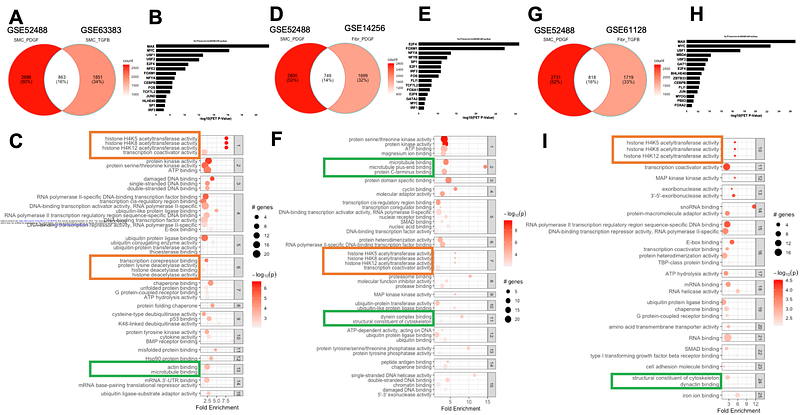Investigation of the impact of bromodomain inhibition on cytoskeleton stability and contraction

Investigation of the impact of bromodomain inhibition on cytoskeleton stability and contraction
Bigger-Allen, A. A.; Ghenani, A. H.; Adam, R. M.
AbstractInjury to contractile organs such as the heart, vasculature, urinary bladder and gut can stimulate a pathological response that results in loss of normal contractility. PDGF and TGF are among the most well studied initiators of the injury response and have been shown to induce aberrant contraction in mechanically active cells of hollow organs including smooth muscle cells (SMC) and fibroblasts. However the mechanisms driving contractile alterations downstream of PDGF and TGF in SMC and fibroblasts are incompletely understood, limiting therapeutic interventions. To identify potential molecular targets, we have leveraged the analysis of publicly available data, comparing transcriptomic changes in mechanically active cells stimulated with PDGF and TGF and identified a shared molecular profile regulated by MYC and members of the AP-1 transcription factor complex. We also analyzed data sets from SMC and fibroblasts treated in the presence or absence of the MYC inhibitor JQ1. This analysis revealed a unique set of cytoskeleton-associated genes that were sensitive to MYC inhibition. JQ1 was also able to attenuate TGF and PDGF induced changes to the cytoskeleton and contraction of smooth muscle cells and fibroblasts in vitro. These findings identify MYC as a key driver of aberrant cytoskeletal and contractile changes in fibroblasts and SMC, and suggest that JQ1 could be used to restore normal contractile function in hollow organs.